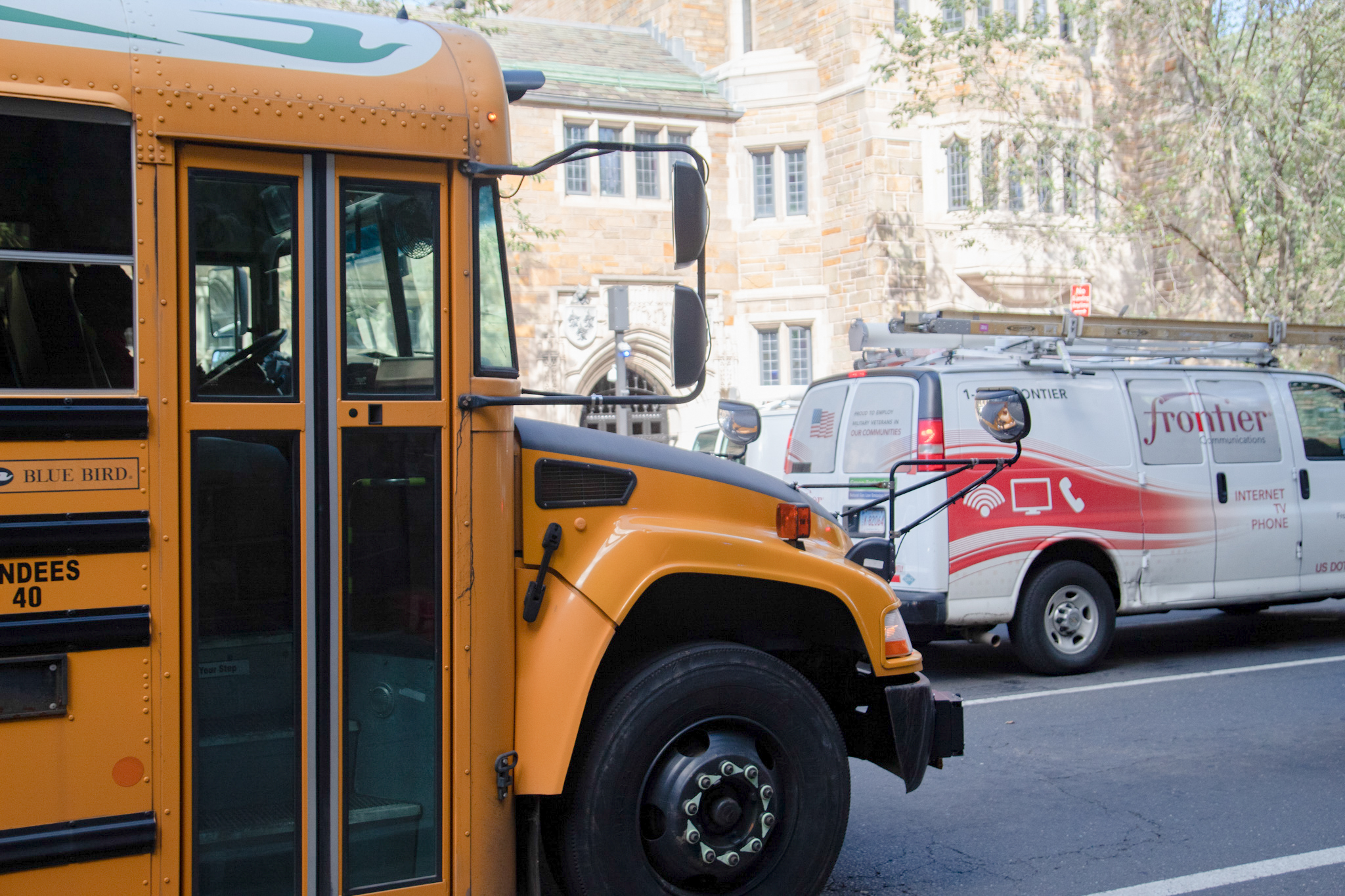School leaders tout math, reading improvements
Superintendent Madeline Negrón and district leadership presented mid-year updates to the Board of Alders on mathematics and literacy, citing promising growth. NHPS also plans to focus more on educator retention.

Zoe Berg, Senior Photographer
Math and reading scores are improving in New Haven schools, while retaining good teachers is a current priority, according to public school leaders.
That was the focus of the report given to the Education Committee of the Board of Alders on Wednesday. New Haven Public Schools Superintendent Madeline Negrón, Assistant Superintendent Keisha Redd-Hannans, Jennifer Tousignat, supervisor of elementary reading and language arts; and Jennifer Sinal-Swingler, supervisor of secondary English language arts, presented the committee with literacy and mathematics screening results, citing an overall growth.
For literacy, the school system introduced a new universal literacy screening test from the Houghton Mifflin Harcourt company. The HMH growth measure assesses both comprehension and language through a computer test by giving harder or easier stimuli according to student response. The Dynamic Indicators of Basic Early Literacy Skills tests, known as DIBELS tests, are also used for universal literary screening. For example, in the DIBELS tests, kindergarteners and first-graders were tested on phoneme segmentation fluency to test phonemic fluency — whether they can separate word sounds into letters. While there is overall growth in phoning segmentation and reading fluency in elementary school, Tousignat hopes to have 35 percent of all students make a full year’s growth in half a year.
“This is important because when we have students that are reading below grade level, we want to make sure that we are accelerating them and that they are making more than a year’s worth of growth in a year,” Tousignat said. “If they just stay with a year’s worth of growth every year and they are behind they’re never going to close that achievement gap.”
Sinal-Swingler agreed, saying that similar tests conducted in secondary schools showed that data is trending in a positive direction. Sinal-Swingler also hopes to see continuous trends of growth.
Negrón added that she is excited about the new HMH assessment but acknowledges that it has not been implemented for long enough to fully analyze results.
“We’re excited because [the HMH] trend is positive, but this is not the time to release that gas pedal … because we just don’t know,” Negrón said. “It’s a new assessment. We are looking forward to continuing along this progress.”
Negrón wants to continue to monitor this new assessment to help brainstorm strategies for students to improve more quickly. The district is also piloting mCLASS and Amira learning as new universal screeners, both approved by the state.
Redd-Hannans reported that mathematics screenings were carried out in a similar manner by comparing mid-year data with beginning-of-year data. The school system is focusing on stretch growth, which shows the growth a student needs to be at grade-level proficiency, and has seen positive data trends.
Another topic discussed during the hearing was the work of educators in the future.
“It has been quite a privilege to see the hard work of the teachers of New Haven and we continue to elevate our thinking by working with our coaching team,” Sinal-Swingler said. “We know that high quality professional development can’t live in isolation of classroom practice.”
Ward 17 Alder Sal Punzo, a former public school teacher and principal, asked if professional development is being looked at in a different way that can give teachers excitement.
Negrón sees educator retention work as the biggest factor of producing positive data trends in these assessments. She said there is a dedicated committee involved in brainstorming retention strategies with a focus on emotional intelligence in administrators and teachers. Negrón and her team have also introduced celebration campaigns, most recently recognizing female teachers on Facebook for Women’s History Month.
As the district works to diversify the teaching force, Negrón said they are introducing professional training for hiring team members.
“We know that we all bring bias … but getting the training so that we’re more open in terms of hiring committees so that when you get a person that has this amazing resume, maybe they talk to you like I do with a heavy accent,” Negrón said. “But just because I have a heavy accent doesn’t mean that all of a sudden the panel has a different opinion.”
By the end of the 2026-27 school year, Negrón hopes to see a 15-percent increase in new teachers of color, reflecting the diversity of students, from the current 29.9 percent teachers of color in the district.
Negrón also mentioned that when she met with Yale University in the summer, she received funding from the NHPS-Yale partnership, which contributes five million dollars to the district annually. She hopes to use the funding to invite educators to work in New Haven schools while also getting their master’s degrees for free at Yale.
Ward 26 Alder Amy Marx LAW ’00 questioned why there is a lack of educator retention, discussing problematic working conditions. Negrón acknowledged that the large number of students significantly behind grade level and poor school facilities are primary reasons for the retention issues. However, Negrón and her team are focusing on professional learning and fostering a welcoming school environment to counteract them.
The Education Committee will be meeting next on April 24 at 6 p.m. in City Hall.







